How I ended my toxic relationship with fast fashion
WHEN DID MY RELATIONSHIP START?
It was in 2015 when I first introduced to brands like H&M, Uniqlo, Cotton On and other fast fashion brands. Of course, a 16 years old teenager would not know what fast fashion is. I remember buying a few clothes from H&M because everyone was talking about it. This later became an addiction as I continuously purchase new clothes every three weeks from these brands to keep up with the “trend”. Growing up, I noticed how I always complain of not having any clothes in my closet when it is actually full with good ones. But was it because of how the clothes are no longer trendy that I have this mindset? Have I ever noticed why these brands could feed our need to fit in with the society by quickly replacing new clothes, what kind of process did they go through? As I realized that my shopping habit has become a mindset, I know that I am in big trouble.
WHEN THINGS STARTED TO CHANGE:
As years passed by, I still purchased my clothes from these brands, but not until a year ago when my friend asked me to accompany her go thrift shopping in Kuala Lumpur, a city in Malaysia. As much as I did not want to go, I could not. I always have the idea that thrift store is dirty, why would you go to a place that is dirty, let alone buy used “unbranded” items. That was what I had in mind, but the reality is, I have not even been into one.
Therefore, my story continues, I followed her to her favourite thrift shop and my jaw dropped as I saw many good quality clothing with a price that not even the brands I mentioned can beat. Out of curiosity, I started asking her on what makes her want and love the idea of thrift shopping. This was also the time when I was slapped at how I was stuck in a toxic relationship… with fast fashion.
How did I know that I was in a relationship with fast fashion? My mindset of always wanting to keep up with the trend and ended up buying more clothes from the fast fashion industry that was damaging. Why? Her answer to my question was simply how she hated that these brands are paying their workers with low pay and position them in hazardous working conditions. She also adds that she loved how by buying pre-loved clothing, she knows that she is not tied to any fashion trend or worry about anyone else having the same clothes as she does.
I was more interested in her first reasoning because I am a consumer of these brands (used to). Still, to the fact that I am supporting the damage this fashion industry has towards the environment and people. I am definitely in a damaging toxic relationship, and this calls for a change.
THE NEED TO LEARN:

In my journey to move towards a more sustainable lifestyle, I did some research to understand the meaning behind sustainable fashion and the issues happening around fast fashion. This is because, for me to slowly change, I need to know more about the downside of the fashion industry: the waste it produces, the pollution it caused and the violations of human rights.
After I did my research, I’ll write down the points where I find it useful for everyone to know and understand. A quick disclaimer, I do not own this information, but this is what I read through here, and here.
What is fast fashion?
- Fast fashion is known as cheap and trendy clothing. This industry produces clothing at a certain speed to meet market demand.
- The clothes are sampled by celebrities.
- The idea is that fast fashion brands will produce the newest styles on the market when the clothes are still in trend.
- Fast fashion has created the idea that you are out of style if you repeat your outfits.
How do I know if the brand I love is a fast fashion brand?
- Fast fashion brands have thousands of styles and probably have whats trending on social media.
- Provide limited quantity for people to buy (Zara actually had this idea to instil urgency for shoppers to buy, making them feel that they will miss their chance if they dont purchase it instantly.
- Some of the materials are cheap and low quality that resulted in it to be thrown away after a few wears.
Moving on to the most crucial part, the impact fast fashion has in waste, pollution and violation of human rights:
WASTE AND POLLUTION
- According to this website, fast fashion produces 1.2 billion tons of C02 per year.
- Fast fashion emits 20% of global wastewater as it takes 2,7000 litres of water to make one cotton shirt. This also involves polluting oceans, rivers, soil and drinking water.
- 60% of clothes are made of materials that can’t be decomposed but is broken down into microfibers – a synthetic fibre that is derived from petroleum.
- Microfibers – pollute oceans and rivers as it travels through our water pipes when we wash our clothes.
(To read more on this, click here)
SOCIAL IMPACT: Violation of human rights
Here comes the reason why my friend was so against the fast fashion industry;
- A 2018 U.S. Department of Labor reported that there was evidence of forced and child labor in the fashion industry in Bangladesh, China, Argentina, India, Indonesia, Turkey, Philippines, Vietnam and other countries.
- These workers are said to work in dangerous environments with low pays and without basic human rights.
- 80% of the clothing made by these fast fashion brands are from young women between the ages of 18 and 24.
- These workers make around 96$ a month in Bangladesh – the government’s suggested that in order to live a decent life with basic facilities, these workers need 3.5 times the amount.
HOW I SLOWLY CHANGED:
After knowing all of this, I decided to put an end to my relationship, and this time for real. I was determined in learning more about this issue. Of course I have random thoughts on why am I doing this? In Malaysia, sustainable clothing brand is expensive. How can I afford that? I have no stable income. Therefore, I decided to feed my guilt by following more zero-waste bloggers on Tiktok and Youtube. Personally, this has helped me in educating myself about sustainability on an everyday basis as I am always scrolling through these two media.
These bloggers, they don’t focus on just one issue on sustainability, they cover various issue, name it; climate change, plastics, sustainable food, well-being etc. Their content not only just focusing on providing awareness but they also provide tips on how we can be more sustainable.
Dropping their username here so that you can follow them too! 🙂
Tiktok:
- @sabrina.sustainablelife
- @omandthecity
- @everydayashleyy
(They offer you tips on sustainability and have a series where they show you the things in their home that are sustainable)
- @honey.milk.bread
(This Tiktok account feature more on which sustainable clothing brand is affordable for you to purchase)
A pro tip for you: You can actually search “#sustainability” on Tiktok and there will be lots of creative videos made by Tiktok users. But the ones I mentioned is my personal favourites.
As for Youtube, I only have one favourite Youtuber:
My Green Closet: this channel talks about the issue that I am currently trying to work on which is an ethical wardrobe and how to be environmentally conscious of buying your clothes.
With this channel, I feel like as if I can relate to her because the channel focuses on one’s journey rather than the result but at the same time provide awareness and information on the unethical practices of the fast fashion industry.
HABITS THAT I STOPPED AND STARTED:
As you have come to this point, you would probably have the idea that sustainable fashion or eco-friendly brands will cost you more because the materials have low impact to the environment. This is where I am going to share with you how I build my own sustainable closet, but on a budget!
Shopping habits:
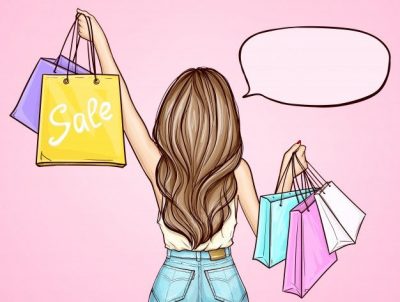
Since sustainable brands will cost you more, I decided to revise my shopping patterns. Like I said at the beginning of my story, I would always go to H&M and Uniqlo regularly, and I even loved it when these brands are on sale. But now, I wouldn’t say that I have stopped completely and that I didn’t purchase even a single clothing from them, but I noticed a significant change where I no longer want to buy their latest clothes and stopped feeding the need to be in the same page as everyone. Because, the environment matters to me.
Thrift shop:
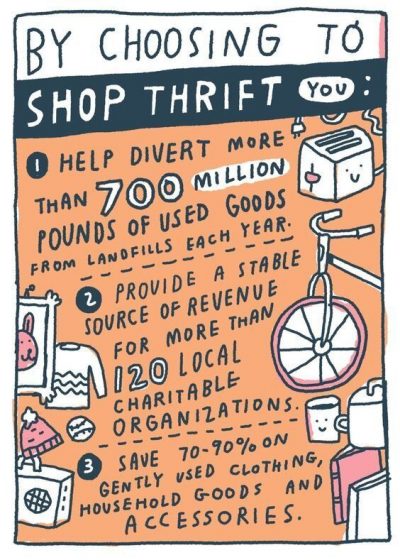
So, as I started buying less at H&M and Uniqlo, I also started to buy more from thrift shops. I followed my friend and started to enjoy digging through every rack just to find good and rare gems. I realized that when I purchase thrift items, I am actually extending the life of the clothing that my friend and I bought. So sometimes even when I know that I have overspent on just clothing, I felt good about it and have become obsessed with the idea of thrift shopping.
Reuse:
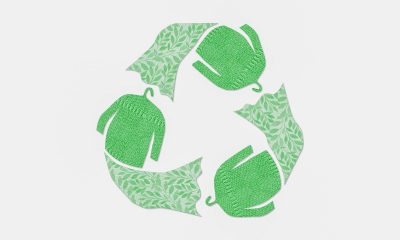
Aside from thrifting, with all the clothes that I purchase from Uniqlo and H&M, I no longer throw them away just when they have become out of style. Another change I noticed in my journey was that I started to use them longer until they can’t be used, which is the opposite of what I used to do.
A tip that I find useful in reusing our clothes is to restyle them, for example, I am a loser for white tops, so I have a lot of them. What I do now with those tops is that I style it as an outerwear and no longer wear it on its own. You see, now I have two ways to style a shirt which I think it’s awesome!
Repair:
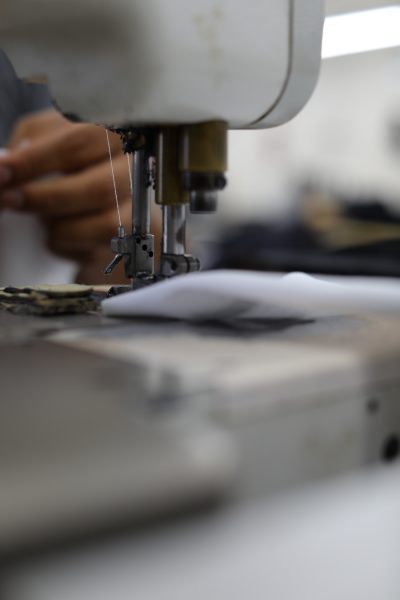
Another tip that I also find useful in my journey was to repair my old clothes. I am now a firm believer that we don’t necessarily have to throw away our clothes if it has slight damage to it. I have learned to fix my old jeans and also the jeans that my mom could no longer fit. What I do is I went to Youtube and learn how to downsize jeans to fit me. You can click here if you want to learn how to do it as well. From what I did, I actually got myself a pair of good “mom jeans” and also a new skill in sewing!
Donate:
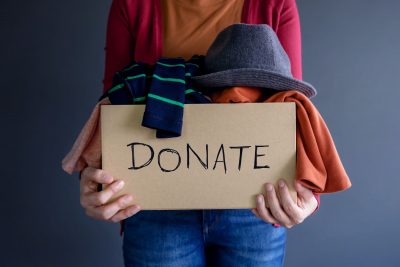
When I decided to clear my wardrobe to have more space for the clothes that I bought from thrift shops, I decided to donate my unwanted clothes for a good cause. I know that it would be selfish of me to keep all those clothes in my wardrobe, but ever since I started this journey, I have this mindset that for every new clothes that I buy, I need to donate something else. From this, it could also help others to be more sustainable and be aware of sustainability.
REFLECTION:
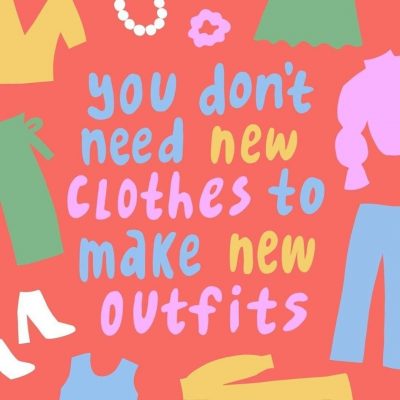
I am still on my journey to be fully sustainable, not just in terms of fashion, but to be sustainable in all aspects. Why I call it as a journey, because I believe that I am still learning, and I didn’t fully quit buying from fast fashion brands, I just stopped the habits of wanting to constantly follow the latest trend and buy impulsively on a piece of cloth that does not benefit the environment and people. I hope this story could encourage you to start somewhere, as for me, I started with the decisions I made for what I want to wear. I realized that I am now more conscious of what sustainability is. Sustainability is what all of us need to take part in, and it starts with YOU.
